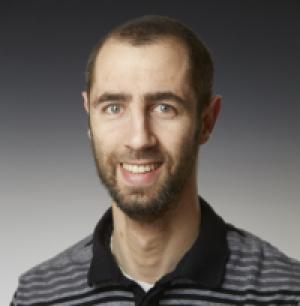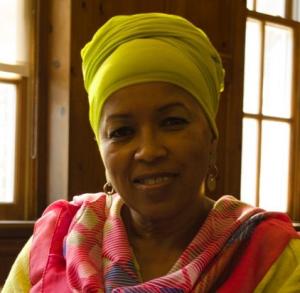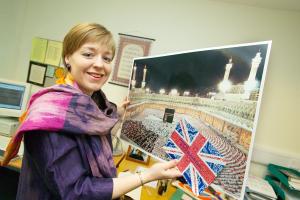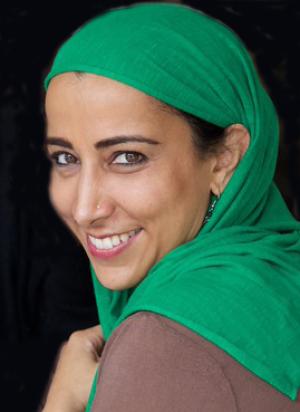Resources

What’s a Catholic College? I grew up agnostic and converted to Islam when I was eighteen. A lifetime later, I now teach at a Catholic, Jesuit, liberal arts college. Like many religious studies educators, I continue to mull over questions about the intersections of identity, metaphysics, and socio-politics. So, when I began working at Le Moyne College, I wondered what kinds of encounters with religion my new position would have in store. I was especially curious because before coming to Le Moyne, I had taught only at state institutions (in California and Tennessee). Since joining the faculty at Le Moyne, I have engaged in a number of on- and off-campus mission-related programs, and these programs have raised a number of questions for me about what it means to teach where I teach: What is Catholic education? What is Jesuit education? To what extent can non-adherents of a tradition teach or study within an institutional context that espouses a particular tradition? My experience has shown me that by deepening my engagement with the Jesuit mission of the college I am better able to serve my students, and even better understand my own location in the pluralistic landscape of higher education. As Amir Hussain (Loyola University, Marymount), former editor of the Journal of the American Academy of Religion (JAAR) and current faculty member at a Jesuit institution writes in his “Editor’s Note” for the JAAR in 2011: “I wonder what the members of the National Association of Bible Instructors (the forerunner of the AAR) would have thought of their journal one day being edited by a Canadian Muslim scholar of Islam teaching at a Catholic university.” I appreciate Hussain’s playful gesture here because it underscores how intermingled religious studies pedagogy can be. That his self-conscious reflection on the context of religious and national pluralism makes its way into the flagship journal of the field is a positive sign for me, especially in a world of growing Islamophobia. As someone who studies and teaches about a particular religious tradition (Islam), I acknowledge the value of assigning categories, but this has its limitations and one’s religious identity is frequently a poor indicator of what people actually believe. (I write more on this in “Muslim in the Classroom: Pedagogical Reflections on Disclosing Religious Identity,” published in Teaching Theology and Religion [2016].) To illustrate this, I often invite my students to dig deep by asking ten Catholics to describe what their traditions mean to them, or to describe Who or What God is. Will they find ten different answers? I think so. As I’ve tried to figure out what Catholic education means to people, I too have encountered a range of voices. Engaging the Jesuit Mission Because my undergraduate and Ph.D. programs were both at state schools, I didn’t know to what extent I might engage Jesuit-related professional development opportunities at Le Moyne; I had no context to compare. Fortunately, I’ve been encouraged by the impact of mission-related workshops, conferences, and study groups on my intellectual development as a teacher, scholar, and citizen. In the broadest sense, teaching as a Muslim at a Catholic college reminds me of the importance of interreligious encounters and helps me, I hope, model and live the kinds of interreligious encounters that I encourage for my students. Conferences like “Collegium”—an annual weeklong colloquy on Catholic higher education—and “Islam at Jesuit Colleges and Universities,” at the University of San Francisco in 2015, have offered me a window into live questions and challenges that diverse educators at Catholic institutions face. I have the opportunity to reflect further on the topic at an upcoming conference at Seattle University, where I’ll participate in a panel entitled “Islam at Jesuit Institutions: Inter-religious Dialogue, Social Justice, and Campus Life.” Despite my own positive experiences encountering and engaging Jesuit education on and off campus, challenges of language and stereotypes still pervade the minds of students as well as faculty; think, for example, about the debates on the relationship of religious studies to theology. My department offers religious studies as well as theology courses, so my attention to these debates has heightened in many ways. To illustrate the disparities in thinking about religiously affiliated institutions, let me conclude this blog post with two brief anecdotes—one about faculty and one about students. Confusing Categories Faculty story: A job candidate for a position at Le Moyne once expressed to me that the school attracted her because it was “faith-based.” As I learned more about what she meant, it became clear that the candidate did not fully understand the context of Jesuit education or the particular institution at which she sought employment. It would be untrue to say that Jesuit education didn’t have a “faith-based” component, but looking around the United States, for example, what this component means to Jesuit schools and their faculty, broadly speaking, is quite different than what it means for, say, Liberty University or any number of “faith-based” institutions. Regarding my argument about religious identity as a poor indicator of, well, a lot of things, I think this becomes straightforward when one examines the range of “faith-based” institutions across the country. (She didn’t get the job.) Student story: A linguistic trope that I often press my students to explain is when they refer to someone as “super-Catholic.” Many of my students, apparently, have a “super-Catholic” member of their family. “Is what you mean,” I try to gently provoke them, “that your uncle is kind of obnoxious and not too interested in learning about diverse opinions?” Although students may not have this blunt characterization in mind when explaining their family member, they often agree with my interpretation. I’ll follow up: “Well, what about your Jesuit professors at Le Moyne—who spent over a decade training to enter the order? Do you consider them super-Catholic?” (If anyone connected to the Le Moyne community is super-Catholic, I should think it would be the Jesuits.) At this point, I suspect I succeed in slightly confusing students and problematizing the imprecision of “super-Catholic” code language. Indeed the institutional context aids me here in guiding students through a teachable moment about word choice and the assumptions we hold about various traditions. Making Context work for Students To help students understand the mission of their institution, I incorporate Le Moyne’s mission statement into some course assignments to invite student reflection on the raison d’etre of their liberal arts experience. Unsurprisingly, I encounter a range of responses. Some students, for example, don’t know that Jesuit means Catholic. At the other end of awareness, a Catholic religious studies major once shared something very perceptive with me: It’s easy to be a student at Le Moyne and pretty much ignore its Catholic-ness, but at the same time it’s also easy to engage with that part of the school if you choose to go that route. To further help my students reflect on institutional context and best appreciate the purpose behind their required courses (all Le Moyne students must take any religious studies class as part of the core curriculum), I briefly share at the beginning of the semester that I’m a convert, but that our course will ask us—professor included—to approach material from a position of epoche (suspension or bracketing of personal convictions). I find that flagging my positionality (while leaving its particulars undefined) as well as our methodological approach signals to my students that no one is out to convert them. (Although if I were out to convert them, wouldn’t it be odd that a Catholic hired someone to convert its students to Islam? What would that even mean—theologically, logistically?) Although I rarely make reference to my own Muslim identity after the first week of class, my courses on Islam focus on issues of race and privilege, so I know my students cannot escape the fact that their teacher is a white convert. As one student recently wrote in an anonymous feedback activity, “When I tell my sisters I have a White professor for this class, they are mind blown.” In conclusion, I consistently find that my typical 18-22-year-olds students appreciate the vibe of the institution, but they’re not necessarily convinced it’s because of its Jesuit Catholic heritage—even if I’m convinced that the institution’s affiliation affects students more than they might suspect. I also find that students tend to appreciate that a Catholic institution would offer classes about all sorts of different religions (as Le Moyne does). For many reasons, including a curriculum that values courses on Islam, I—and I think most of my students as well—consider Le Moyne a super Catholic college. Perhaps even a super-Catholic college.

Lack of awareness about what Islam is and how its followers are religiously motivated to act, coupled with heightened tensions during the 2016 presidential campaign about the patriotism of American Muslims, led me to offer “Arabs and Muslims in the Media” as a first-time offering this semester. The twenty-one students who registered for the seminar include seven who have yet to declare a major, nine who registered for credit through the Critical Identities Studies (CRIS) Program, first-year Beloiters, graduating seniors, an exchange student from Ireland, and four born into Muslim households. Both of my teaching assistants had taken a minimum of one course with me that featured at least one section on the teachings or rituals of the world’s fastest growing religion. “Arabs and Muslims in the Media” was the first exposure to Islam, or to any of the daily realities of Muslims, for the majority of the class. We opened the seminar by engaging with Linda Martin Alcoff’s “The Problem of Speaking For Others,” an essay that challenged students to reflect upon their own positionality and privilege as they approached the two major assignments: a 200-word entry for this blog and a PSA about Islam and/or Muslims. Later in the first week, the class raised questions about the essay and their own insecurity about appearing to “speak” for followers of Islam. The sentiments of one student sums up the concerns of the rest: “I never thought about the impact of my own words on this level before, or how wrong we can be about what we think we know. I’m worried that I am not qualified to complete the final assignment.” To address such concerns, students received a brief survey of Islamic history and the emergence of Muslim communities in the U.S., along with an introduction to beliefs and practices, and the role of gender and sexuality, in Islam. Throughout the seminar, we critiqued a variety of visual and written representations. Guiding our journey were two primary texts: Evelyn Alsultany, Arabs and Muslims in the Media, and Moustafa Bayoumi, How Does It Feel to be a Problem: Being Young and Arab in America. Students reflected on the readings in various ways. Ryan, for one, noted, “By reading [Bayoumi’s work], I was opened up to the realities of young Arabs in America. I was able to read the real struggles they face from these negative stereotypes.” We watched a number of films, Youtube videos, and documentaries including “Frontline: Muslims,” “Persepolis,” “Jihad for Love,” and “The Kingdom of Heaven.” Students were also directed to analyze and review a film, selected from a list of more than 100, whose plots/characters featured Muslims and/or Islam. Interestingly, nearly half the class zeroed in on four: “Malcolm X,” “Slumdog Millionaire,” “The Battle of Algiers,” and “Dirty Pretty Things.” Our TAs, Grace Gerloff, and Joshua Randolph, also created a demo PSA that unpacked the concept of jihad. Their efforts helped students visualize what they could accomplish. While I focused on potential content for both the blog entry and PSA, Grace and Joshua mentored students on technical aspects and how to focus on a single idea. Students will present their PSAs during a public forum on May 5. Here’s a selection of student blog entries. Some students focused on the content of what they learned: Nikki: “Many Americans seem to view the hijab as a plea for help by its wearer, as though it were a sign of oppression rather than religious expression.” Constance: “The Qur’an states that both men and women should dress modestly, but what modesty means is up to interpretation.” Sasha: “Many people think that hijab refers to a specific style of garment worn by Muslim women but in reality, the concept of hijab is present in both Christianity and Judaism as well as other religions and cultures, just under different names.” Alberto: “In the Qur’an, Muslims are reminded that they are not the only people of God.” Diego: “The term “Allahu Akbar” is an Islamic phrase that translates to ‘God is Great.’ This is a phrase that is used in celebration, prayer, happiness, and many other occasions to thank God. However, the phrase is commonly tied only to terrorists.” Charlie: “The Angel Gabriel made me reevaluate the way that I was looking at Islam. Though the connection of Islam to Christianity and Judaism was something I had talked about before, this was the first explicit example I had seen that explicitly linked the three Abrahamic religions.” Chris: “The religion we have been told is the ‘enemy’ of the West, is in actuality more similar to our Christianity than we would currently like to believe.” Joe: “In high school, I enjoyed a series of action novels where the protagonist was an American special forces operative fighting to protect American interests from his Muslim enemies.These books contained blatant generalizations about the violent nature of Islam. I didn’t necessarily believe these statements, but I never questioned them.” Ryan: “By taking this class, I have been given great resources about the Muslim religion and the Quran which have allowed me to be able to pick apart what I have been taught and relearn the truth about Muslims and their beliefs.” Seamus: “This course taught me that no matter how many statistics you may know, they are not nearly as valuable as discourse, and the various identities involved, and the perspectives that they bring.” Jessica: “I personally knew nothing about Islam or any of its teachings before this class and the one thing I was very interested in was the hijab. In papers and stories, it is almost portrayed as a sign of oppression, which is not the case at all. I learned from this class the power of personal identity.” Other students reflected upon their own socialization: Kirsten: “There has been a call in the West to ‘save the oppressed Muslim women’ because of the belief that Islam is an oppressive religion. When I was younger, I fell for this ploy and believed that Islam required women to dress in a specific way.” Katlyn: “I grew up in a conservative household, I heard considerable stereotypes of Muslims. It narrowed my idea of women in Islam.” Diane: “I took this course because I thought it would be a great way to reflect and dive into how I might be able to navigate stereotypes and deep-rooted, false narratives as an aspiring journalist.” Hana: “I’ve learned that being Muslim and Anti-Zionist should not automatically qualify me as being anti-Semitic.” Still, others reflected upon the impact of technology on their new knowledge: Hoodish: “This class taught me that censored media is indeed very destructive. I intend to confront these people by making them acknowledge their biases towards Islam.” Ashley: “Video, specifically, has allowed me to learn about the different struggles that Muslims face depending upon their class, nationality, sect, immigration status, gender, sexuality, age, race, and family status.”

Sophie Gilliat-Ray Director Centre for the Study of Islam in the UK Cardiff University I ended my last blog entry by noting the value of inter-religious relationships formed among students learning about Islam in the higher education environment. Continuing with this theme, one of the consequences of this mixed-faith, or...

Najeeba Syeed-Miller Assistant Professor Claremont School of Theology I write in a time when the study of Islam is of paramount importance. This blog entry focuses on the teaching of Islam in interreligious settings, with an eye toward the notion of pluralism. So often, engaging this tradition starts with the